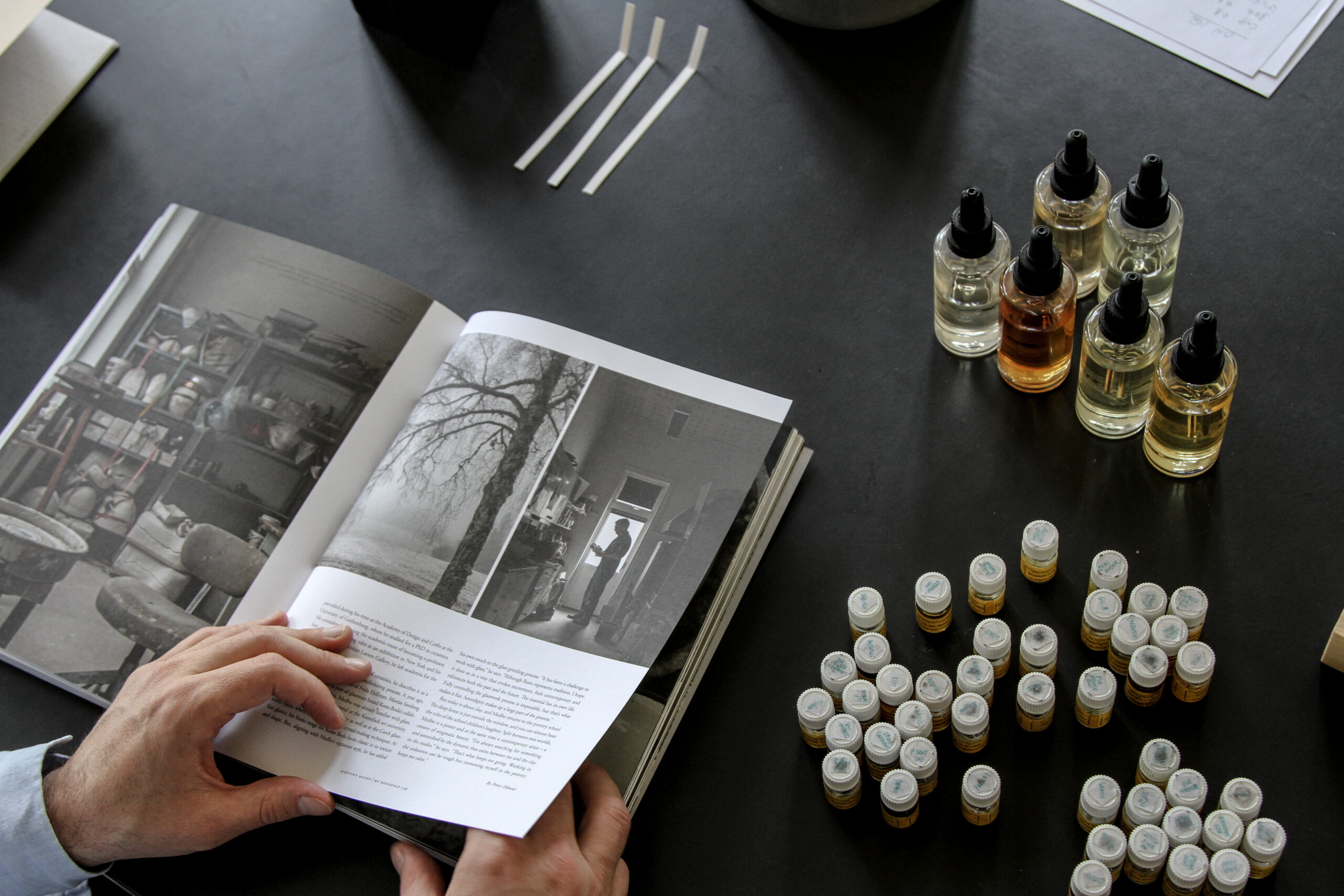 Flexible layouts allows the ground-floor area to be multi-functional|The raw steel reception desk|Glass partitions provide a view beyond the monochrome halls|Ninetynine cut into the ground floor to provide access to the basement|The stairwell provides a mezzanine used as both a studio and a stage for events|Ninetynine sourced vintage and second-hand furniture for the eight editing suites|The design creates a blank canvas on which to showcase Vice work|Ninety nine sourced vintage and second-hand furniture for the eight editing suites|The continuous custom-made desk encourages staff to be team players|The continuous custom-made desk encourages staff to be ‘team players’|The photographic studio/meeting room shuttered by a garage door|The red-brick building formerly housed a bank||
Flexible layouts allows the ground-floor area to be multi-functional|The raw steel reception desk|Glass partitions provide a view beyond the monochrome halls|Ninetynine cut into the ground floor to provide access to the basement|The stairwell provides a mezzanine used as both a studio and a stage for events|Ninetynine sourced vintage and second-hand furniture for the eight editing suites|The design creates a blank canvas on which to showcase Vice work|Ninety nine sourced vintage and second-hand furniture for the eight editing suites|The continuous custom-made desk encourages staff to be team players|The continuous custom-made desk encourages staff to be ‘team players’|The photographic studio/meeting room shuttered by a garage door|The red-brick building formerly housed a bank||
Dutch practice Ninetynine has designed Vice’s Amsterdam HQ with a refined, industrial aesthetic, providing a neutral backdrop for the youth-media brand’s creative output.
An outpost of the US company, the office’s 50-strong team had outgrown its original premises, and was relocating to a former bank building in the historic centre of Amsterdam.
The red-brick building, according to Ninetynine founder Jeroen Vester, was a labyrinthian mess of small rooms and 1980s office interiors. The practice stripped back the fittings and finishes that chimed the corporate bell to expose the concrete floors, brick walls, ducts and services.
Beyond the metal block reception desk punctured with the Vice logo, Crittall-window-style glass walls help to maintain the building’s sightlines and maximise light. Uplighters run along ceiling cable ducts, subtly emphasising the grid-like layout and solid structural columns. The monochrome interiors are saved from sterility by ‘manly’ plant pots and strong images of the company’s various creative endeavours.
“I think the design suits the brand well,” he said. “I wouldn’t say it’s masculine, but it’s quite a tough, strong look.”
The various rooms on the ground floor, transparent as goldfish tanks, reveal the company’s informal attitude and day-to-day workings. The boardroom does away with a central table in favour of furlongs of black squishy sofa and bold images of artists. The addition of a woven rug, aged Chesterfield and mid-century side unit temper the MTV-generation vibe.
A custom-made communal desk winds its way around the first-floor area theoretically to allow the entire staff force to work alongside each other. Made of 72mm Polish pine, the eye-catching table features a gully down its centre that contains sockets and cable openings for mobile devices, and classic desk lamps over each workstation.
Ninetynine plumbed a raw steel stairwell through from the ground floor to the basement, helping to further open up the building. In doing so, it introduced a mezzanine level that functions as a meeting space and photographic studio, as well as a stage for events held on the lower level.
Its ‘garage door’ can be lowered for greater privacy and, together with the vintage furniture plonked on the concrete floor, helps create a space reminiscent of a ‘den’ for a teenager who has decamped from their parent’s house for band practice and zit popping.























